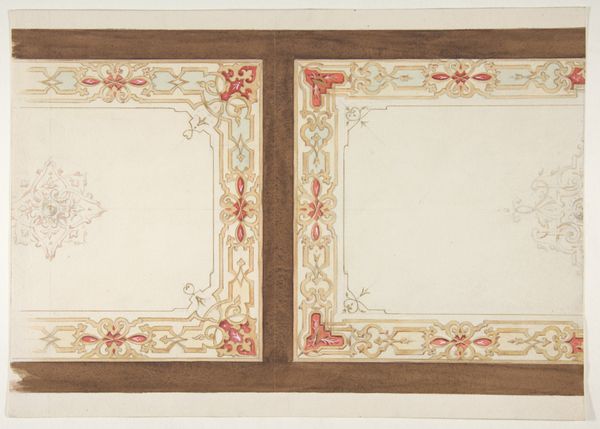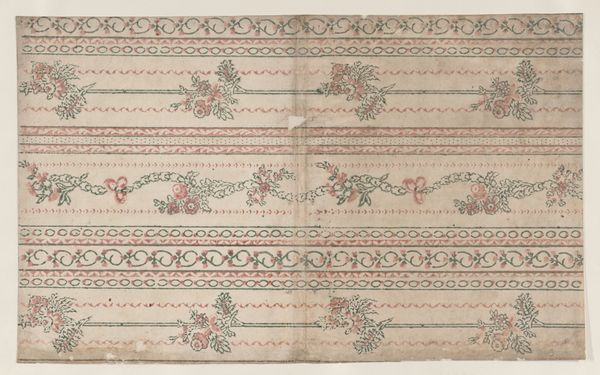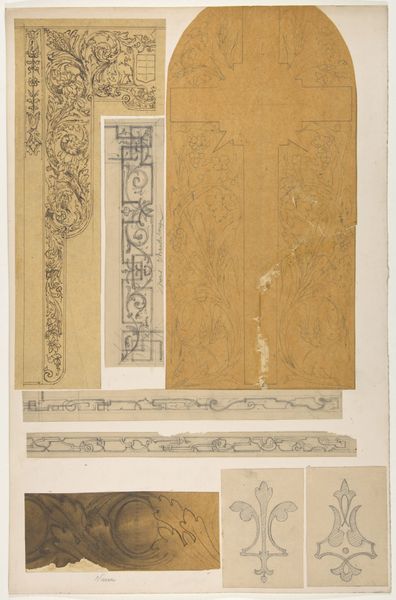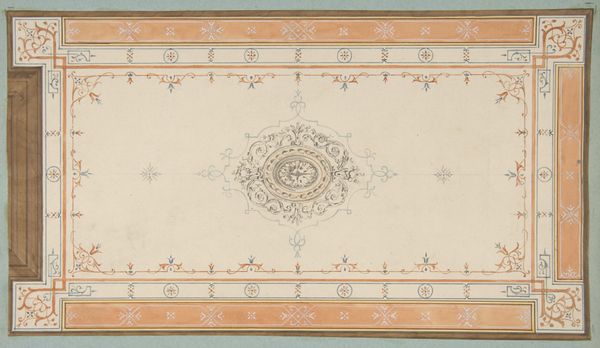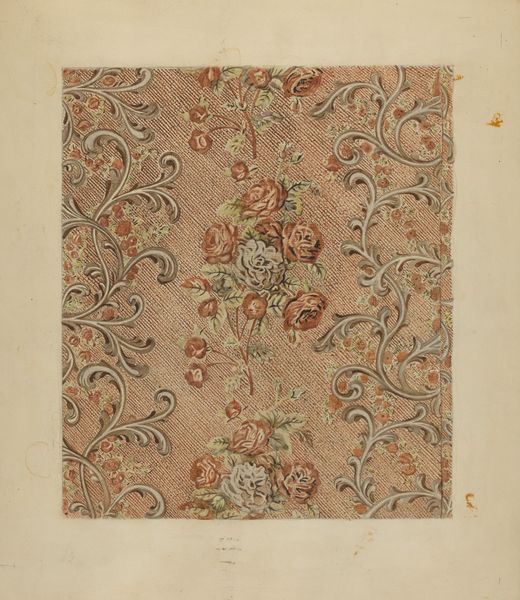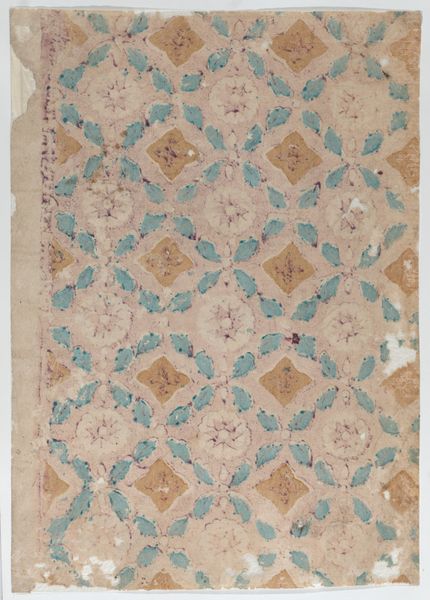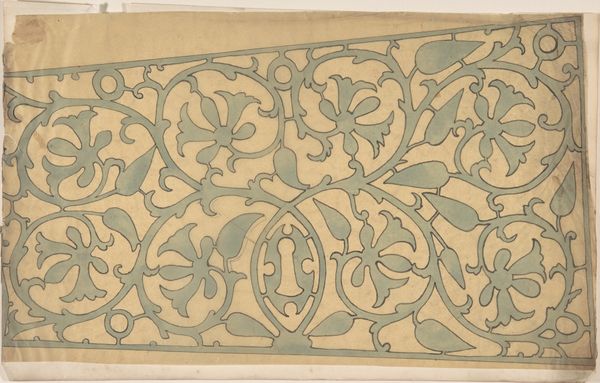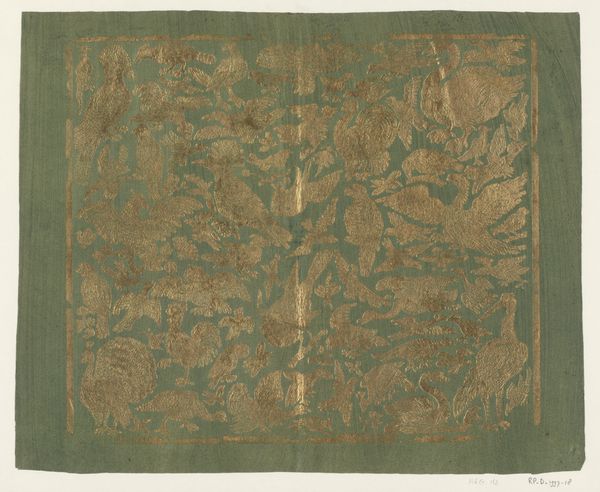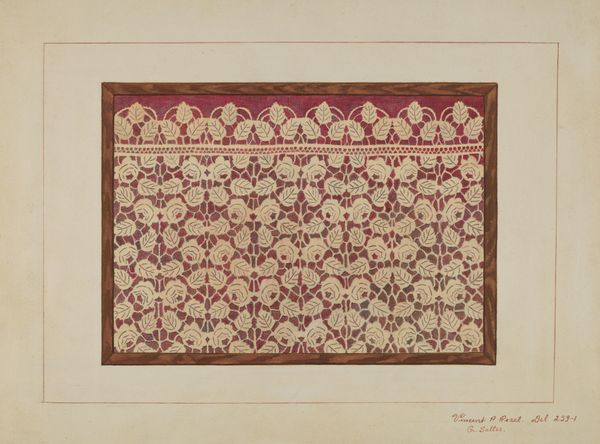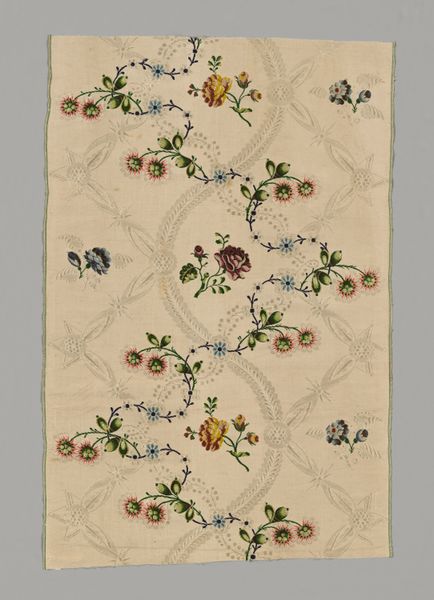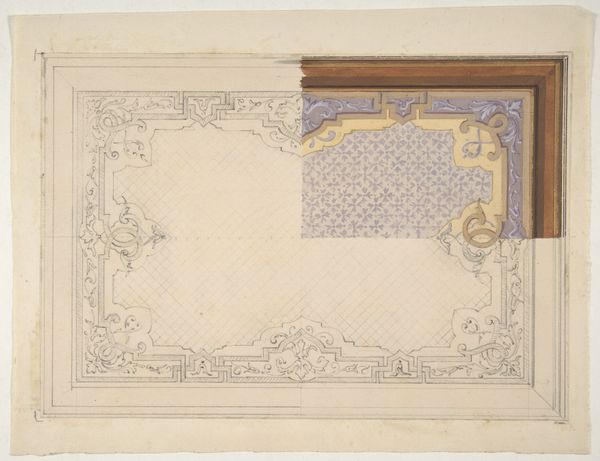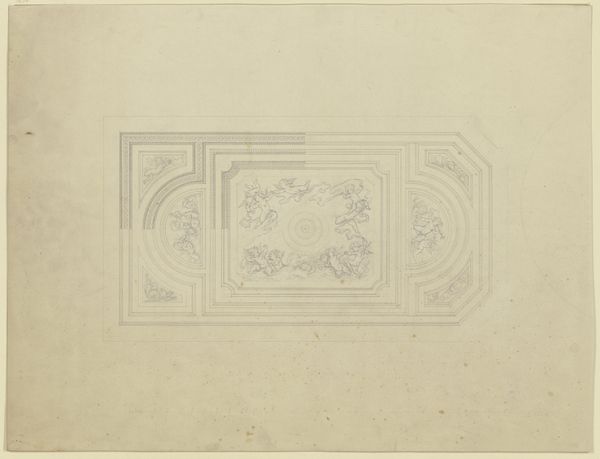
Ceiling Design in Moorish Style for the de la Rochejaquelein Family 1850 - 1900
0:00
0:00
drawing, print, watercolor, mural
#
drawing
# print
#
watercolor
#
islamic-art
#
decorative-art
#
mural
#
watercolor
Dimensions: 11 5/8 x 8 5/84 in. (29.5 x 20.5 cm)
Copyright: Public Domain
Editor: Here we have Jules-Edmond-Charles Lachaise's "Ceiling Design in Moorish Style for the de la Rochejaquelein Family," likely from between 1850 and 1900. It appears to be a watercolor drawing, perhaps intended as a print. What's immediately striking is how it blurs the line between art and utility – it's both aesthetically pleasing and clearly a design blueprint. What's your take? Curator: It’s important to look at the materiality of this work – the watercolor on paper, the reproductive potential implied by its design-like nature. The drawing wasn’t conceived as a unique art object, but a pattern meant to be reproduced and consumed by a wealthy family. Editor: So the "art" aspect is secondary to the labor and industrial design involved? Curator: Not necessarily secondary, but inextricably linked. Consider the social context: the de la Rochejaqueleins were a prominent noble family. This Moorish style was not simply aesthetic preference but signified power, exoticism, and access to global styles during a period of intense colonialism. The production and consumption of this design reinforced those power dynamics. Editor: I see, the design becomes a marker of their social standing, displayed through their engagement with, and appropriation of, a specific cultural aesthetic. The watercolor itself, would that then just be a sample of what could then be a far grander decorative statement. Curator: Precisely! Think of the skilled labor required to execute this design on a large scale, the potential use of cheaper materials to increase profits, or the working conditions of those artisans. The 'art' is embedded within those processes and considerations. What we see here is not just a pretty picture, but a fragment of economic and cultural history. Editor: That’s fascinating, it’s definitely altered my understanding of this artwork; moving beyond appreciating just the aesthetic. I'm realizing it's far more interconnected to societal implications. Curator: And by questioning that relationship between process and culture, we gain a more profound perspective.
Comments
No comments
Be the first to comment and join the conversation on the ultimate creative platform.
